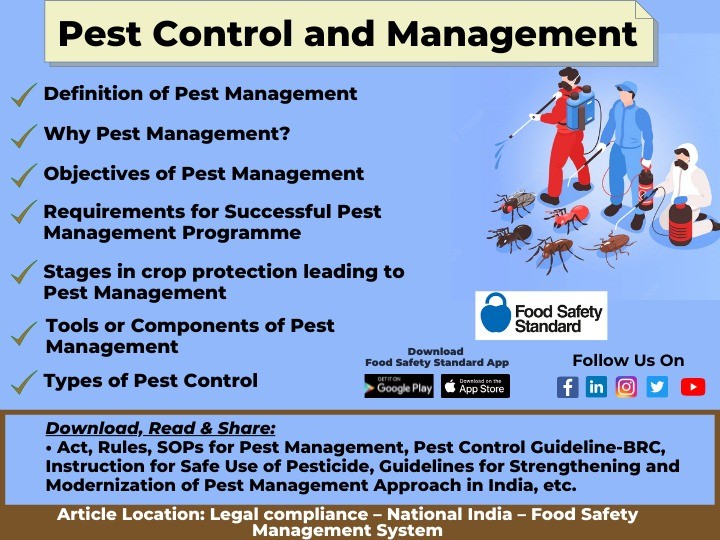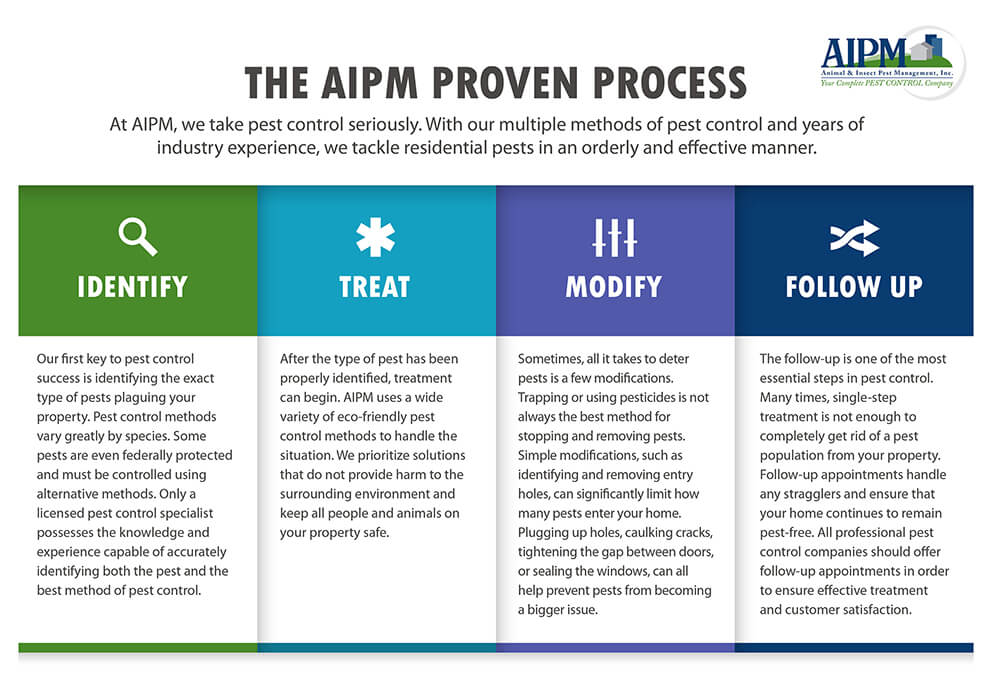Facts About Pestwise Uncovered
Table of ContentsPestwise Fundamentals ExplainedThe Ultimate Guide To Pestwise8 Easy Facts About Pestwise DescribedRumored Buzz on PestwiseThe Best Strategy To Use For Pestwise6 Simple Techniques For PestwiseThe 7-Minute Rule for PestwiseThe Ultimate Guide To PestwiseThe 5-Minute Rule for PestwiseHow Pestwise can Save You Time, Stress, and Money.
An organism needs to not be considered a bug until it is shown to be one. Classifications of parasites consist of: continual insects that arc almost always existing and need regular control. sporadic. migratory, or cyclical pests that require control sometimes or periodically. possible bugs that do not require control under normal conditions.Exact identification is the primary step in a reliable bug administration program. Never try a parasite control program till you are sure of what the pest is. Bed Bug Treatment. The more you find out about the pest and the variables that affect its development and spread, the much easier, a lot more cost-effective, and a lot more effective your parasite control will certainly be
Getting My Pestwise To Work
As a qualified applicator, you need to know with the bugs you are most likely to come across in the kind of operate in your certification classification. To be able to determine and regulate parasites, you require to understand: the physical features of the insects most likely to be run into. characteristics of the damages they create, their growth and biology, whether they are constant, erratic.
Trigger as little injury as possible to whatever other than the parasite. It could cost even more to manage the insect than would be lost because of the parasite's damage.
The Ultimate Guide To Pestwise

The intent is to reduce the number of insects to a degree where the injury they are creating is acceptable. Once a bug's existence is detected and the decision is made that control is required, reductions and avoidance commonly are joint objectives.
is an uncommon objective in outside insect situations, because it is challenging to achieve. Generally the goal is avoidance and/or suppression. Eradication is periodically tried when a foreign pest has actually been accidentally presented however is not yet established in a location. Such removal techniques usually are supported by the Government.
The Buzz on Pestwise
gypsy moth, and fire ant control programs are examples. In indoor locations, obliteration is a more usual goal. Confined settings normally are smaller, less intricate, and a lot more quickly controlled than outside areas. In numerous confined locations, such as houses; institutions; office complex; and wellness care, food processing, and food prep work centers, particular pests can not or will certainly not be tolerated.
Limits might be based on esthetic, health and wellness, or economic factors to consider. These degrees, which are understood as "activity limits," have been determined for numerous parasites. A threshold commonly is evaluated the degree where the economic losses brought on by bug damages, if the pest populace remained to grow, would be higher than the price of controlling the pests.
The presence of any kind of rats in food handling centers forces activity. In homes, individuals generally take action to manage some parasites, such as rodents or cockroaches, also if just one or a few have been seen. In the majority of pest control circumstances, the location to be protected need to be monitored (examined or scouted) typically.
Little Known Facts About Pestwise.

There is zero tolerance for the existence of germs in running spaces and various other clean and sterile locations of wellness treatment centers. In these situations, regular pest control procedures are taken to stop parasites from entering a location and to eliminate any kind of bugs that might exist. Pest control entails even more than just determining a bug and using a control technique.
All of these might be influenced by the parasite control measures you pick. Unless you think about the possible results on the entire system within which the parasite exists - Exterminator.
The smart Trick of Pestwise That Nobody is Talking About
The actions of every kind of microorganism or element sharing the site typically affect the activities and wellness of numerous others. When the balance is interfered with, certain organisms may be damaged or lowered in number, and others sometimes the bugs - may control. Integrated bug management is the integrating of ideal parasite control strategies into a solitary strategy (method) to minimize bugs and their damage to an appropriate level.
Relying only on pesticides for pest control can cause parasites to develop resistance to pesticides, can cause outbreaks of other insects, and can hurt surface areas or non-target organisms. With some types of parasites, use chemicals as the only strategy will achieve really bad control. To address insect troubles. you have to: determine the pest or bugs and establish whether control is necessitated for each.
Climate condition, especially temperature, day size, and humidity, influence parasites' task and their rate of recreation. Bugs might be killed or reduced by rain, freezing temperatures, drought, or various other negative weather. Climate additionally impacts bugs indirectly by influencing the growth and advancement of their hosts. A population of plant-eating insects is associated to development of click over here its host plants.
Pestwise for Dummies
Birds, reptiles, amphibians, fish, and creatures feed on some insects and aid regulate their numbers. Many predatory and parasitical bug and insect-like species feed on various other organisms, some of which are parasites.
Pest populations can grow just as lengthy as their rood and water supply lasts. When the food resource - plant or pet - is tired, the bugs die or end up being inactive.
Not known Factual Statements About Pestwise
All-natural controls usually do not regulate bugs promptly or totally sufficient to avoid inappropriate injury or damage. Some plants, animals, and structures resist insects far better than others.
Use resistant kinds, when available, assists keep bug populations below unsafe degrees by making problems much less positive for the parasites. Host resistance works in three main methods: Chemicals in the host fend off the parasite or stop the pest from completing its life cycle. The host is extra vigorous or forgiving than various other ranges and thus much less likely to be seriously harmed by insect attacks.
The Buzz on Pestwise
Biological control includes the use of all-natural enemies parasites, predators, and pathogens. You can supplement this all-natural control by releasing even more of a bug's adversaries right into the target area or by presenting new adversaries that were not in the location prior to. Biological control generally is not elimination. The level of control changes.
However, under correct conditions, sufficient control can be attained to eliminate the hazard to the plant or pet to be secured. Organic control also includes techniques through which the bug is biologically modified, as in the manufacturing and release or great deals of clean and sterile males and the usage of pheromones or juvenile hormones.
Put in a catch, as an example. they can bring in the bugs in a sample area so that insect numbers can be approximated. Pheromones also can be a control device. Sometimes a manufactured copy of the pheromone that a women pest uses to attract men can be used to confuse males and stop breeding, leading to lower numbers of parasites.
Some Known Factual Statements About Pestwise
(https://www.behance.net/josehawkins1)Cultural techniques often are used to decrease the numbers or pests that are attacking cultivated plants. These methods change the setting, the condition of the host plant, or the behavior of the parasite to protect against or reduce an invasion. They interfere with the regular relationship between the insect and the host plant and make the pest much less likely to endure, expand, or recreate.
Devices, devices, and other techniques made use of to regulate insects or change their environment arc called mechanical or physical controls. Catches, displays, barriers, fences, nets, radiation, and electrical power occasionally can he made use of to stop the spread or parasites right into an area. Lights, heat, and refrigeration can alter the setting enough to suppress or get rid of some parasite populaces.